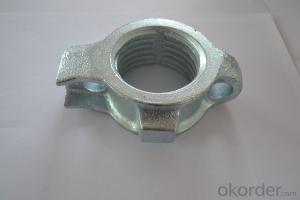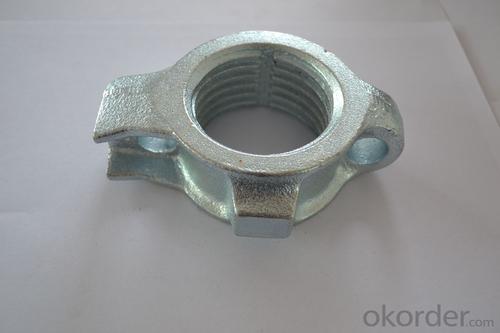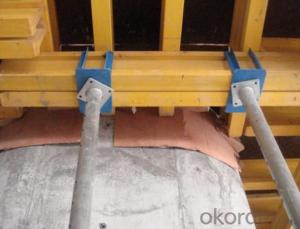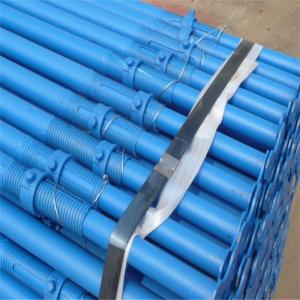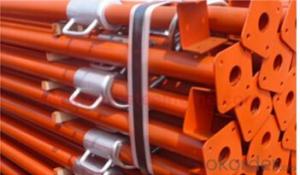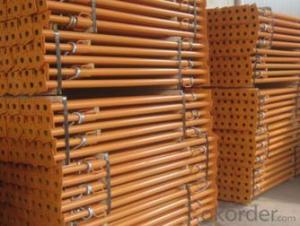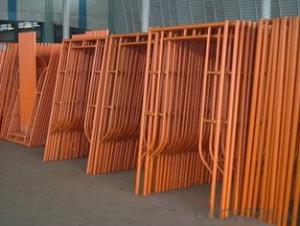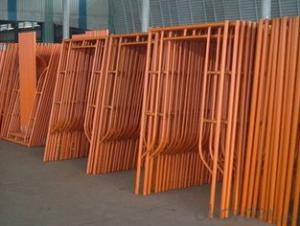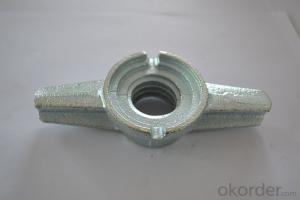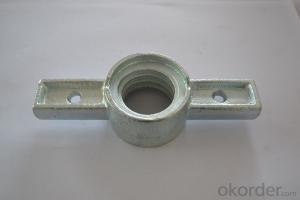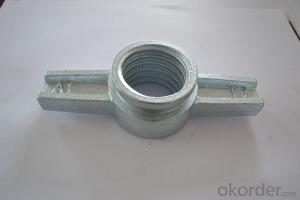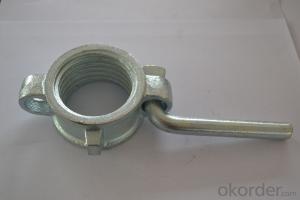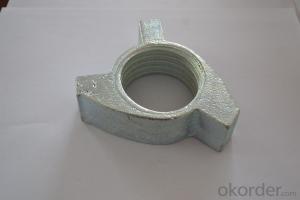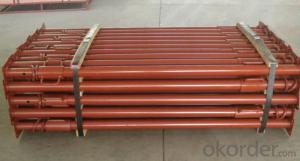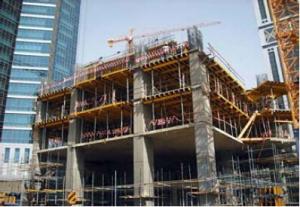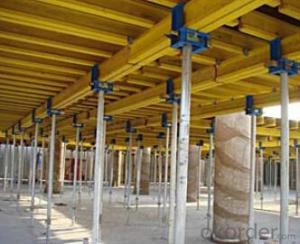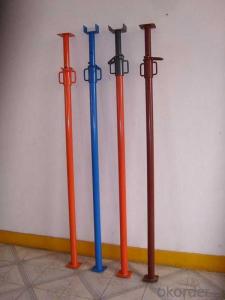OEM Two wing Butterfly Wing Nuts 2
- Loading Port:
- China Main Port
- Payment Terms:
- TT OR LC
- Min Order Qty:
- -
- Supply Capability:
- -
OKorder Service Pledge
OKorder Financial Service
You Might Also Like
Quick Details
| Model Number: | |||||
| Standard: | Type: | Certification: | |||
| Material: | Surface: |
Packaging & Delivery
| Packaging Detail: | Plastic bag, pallet packing, carton box, by customer's requirement |
| Delivery Detail: | within 30days after payment |
Specifications
Two wing Butterfly Wing Nuts
1>Excellent dimension accuracy
2>Finished: per your requirements
3>factory directly supply
Two wing Butterfly Wing Nuts
We supply kinds of metal parts totally according to clients' drawings and samples and special requirement.
1. Material: Ductile iron .
2. Sizes: Inner hole Dia 15/17mm.
We have different sizes ,types of wing nut to meet your needs, save your cost .
3. Weight: 0.35kg,thread pitch: 10.0mm.(or 6.35mm)
4. Surface: White Zinic , Yellow Zinic or painted, self color
5 Thread:casted or machine tap.
1. 12000M2 standard modern workshop guarantee production capability to satisfy the customers needs
2. Our Independent quality control department,Which make sure the quality of all products
3. Our efficient and experienced sales team ,provide friendly and thoughtful service for clients from all over the world
- Q: How to calculate the axial force of steel support in subway construction
- Axial force: in architecture, the internal force which coincides with the axis of the rod is called axial force, which is represented by the symbol FN. When the bar is pulled, the axial force is Tension, which points away from the cross section; when the member is pressed, the axial force is the pressure (Compression)
- Q: Can steel props be used in the construction of dams?
- Certainly! Steel props are capable of being utilized in the construction of dams. Referred to as steel supports or steel shoring, these props are commonly employed in construction projects to offer temporary support to structures or excavations. Throughout the process of dam construction, steel props can be utilized at various stages. In the phase of excavation, steel props can be implemented to secure the sides of the excavation, thereby preventing the collapse of soil or rock. This aspect holds immense importance as it ensures the safety of workers and upholds the overall stability of the site. The length of the steel props can be adjusted and they can be installed accordingly to meet the specific requirements of the excavation. Furthermore, during the construction of dam walls, steel props can also be employed. They play a crucial role in supporting the formwork or molds that shape the concrete walls of the dam. By providing stability and strength to the formwork, steel props enable construction workers to pour and shape the concrete in a controlled manner. Moreover, steel props can be utilized during the maintenance or repair of dams. Whenever specific sections of a dam necessitate maintenance or repair work, steel props can be employed to offer temporary support to the surrounding structures. This not only ensures the safety of workers, but also prevents any potential collapse or damage to the dam. In conclusion, steel props are versatile and dependable tools that prove to be highly effective in the construction of dams. They are capable of providing temporary support, stability, and safety, thus making them an indispensable component in the construction and maintenance of dams.
- Q: Are steel props adjustable at an angle or only vertically?
- Steel props are adjustable both vertically and at an angle.
- Q: What safety precautions should be taken while using steel props?
- To ensure the well-being of workers and prevent accidents, certain safety precautions must be taken when using steel props. The following are some safety measures that should be implemented: 1. Thorough training is necessary for workers to understand the correct usage, assembly, and disassembly of steel props. Additionally, they should receive education on potential hazards and how to mitigate them. 2. Before utilizing steel props, a detailed inspection should be conducted to identify any signs of damage, such as cracks, bends, or rust. Faulty props should never be utilized, as they can compromise safety. 3. It is crucial to assess the load capacity of the steel props and ensure that it is not exceeded. Overloading can lead to collapse or failure, resulting in serious injuries or even fatalities. 4. Steel props should be securely positioned and braced to prevent accidental movement or collapse during use. They should be installed on a stable and level surface, employing any necessary shoring or bracing techniques. 5. Regular maintenance and inspections should be carried out to identify and address any wear and tear or potential issues with the steel props. This includes lubricating moving parts, checking for loose or damaged components, and replacing worn-out parts. 6. Workers must always wear appropriate personal protective equipment (PPE) such as safety helmets, steel-toed boots, gloves, and eye protection. This ensures protection from potential falling objects or debris. 7. Effective communication and coordination among workers are essential for the safe use of steel props. Clear instructions should be provided, and workers should be aware of their roles and responsibilities. 8. Workers should be familiar with emergency procedures and have access to first aid kits and fire extinguishers. In case of an emergency, they should know how to safely evacuate the area. By adhering to these safety precautions, the risk of accidents, injuries, and property damage can be significantly reduced when using steel props. Safety should always be prioritized, and workers should be adequately trained and equipped to handle the equipment correctly.
- Q: Are steel props suitable for supporting temporary stages or platforms with moving parts?
- Steel props are commonly used to support temporary stages or platforms that have moving parts. They possess great strength, durability, and the ability to bear heavy loads, making them an ideal choice for providing stability and support to temporary structures. Furthermore, steel props can be easily adjusted to various heights, allowing for customization and adaptability to the specific needs of the stage or platform. However, it is crucial to ensure the proper securing and bracing of the steel props to prevent any potential movement or instability. It is also important to regularly inspect and maintain the props to detect any signs of wear or damage that may compromise their integrity. When used correctly and maintained appropriately, steel props can be relied upon as a dependable and efficient option for supporting temporary stages or platforms with moving parts.
- Q: Can steel props be used in historical or heritage restoration projects?
- Historical or heritage restoration projects can make use of steel props. These props are commonly employed in construction and renovation endeavors to offer temporary support to structures. They prove to be especially beneficial in historical or heritage restoration projects where the existing structure may be delicate or unsteady. To provide the necessary support and stability during the restoration process, steel props can be adjusted accordingly. They are applicable for supporting walls, ceilings, or other structural elements that require reinforcement or repair. Moreover, steel props can be easily customized to suit the specific needs of each restoration project. The strength and durability of steel props are advantageous when used in historical or heritage restoration projects. They are capable of withstanding heavy loads and providing reliable support. This is crucial in restoration projects where the aim is to preserve the original structure and ensure its longevity. Additionally, steel props are versatile and applicable in various restoration scenarios. They can stabilize walls, reinforce arches, or support floors during the process of restoring historical buildings. Their adjustability allows for precise positioning and alignment, essential for maintaining the structural integrity of the building. It is important to consider the aesthetic impact when utilizing steel props in historical or heritage restoration projects. Depending on the specific project and its requirements, additional measures may be necessary to ensure that the steel props do not diminish the historical or heritage value of the structure. This can involve using temporary coverings or disguising the props to blend in with the surrounding architecture. In conclusion, historical or heritage restoration projects can indeed utilize steel props. Their strength, durability, and versatility make them a valuable asset in providing temporary support and stability to fragile or unstable structures. However, it is vital to integrate the props in a manner that respects and preserves the historical or heritage value of the building.
- Q: Are steel props adjustable in small increments?
- Steel props can be adjusted in small increments, providing precise leveling and support in construction projects. These adjustable steel acrow props, also referred to as adjustable steel props, are widely used in construction and temporary support systems. Featuring a telescopic inner tube and an outer tube, they allow for different height adjustments in small increments. This versatility makes steel props suitable for a variety of applications, ensuring stability and safety on construction sites.
- Q: Can steel props be used for supporting temporary seating arrangements or bleachers?
- Yes, steel props can be used for supporting temporary seating arrangements or bleachers. Steel props are commonly used in construction and temporary structures due to their strength and stability.
- Q: Can steel props be used for temporary support during pipe rack installation?
- Indeed, steel props are capable of providing temporary support during the installation of a pipe rack. Within construction projects, these props are commonly employed to offer temporary support to structures or equipment. Their height is adjustable, facilitating easy installation and removal. The robust and resilient nature of steel props renders them suitable for supporting substantial loads during the pipe rack installation process. Their strategic placement can enhance stability and safety throughout construction. Nevertheless, it is crucial to ensure that the steel props are appropriately sized and positioned to bear the weight of the pipe rack and any additional burdens. Additionally, regular inspections and maintenance measures must be taken to preserve the ongoing integrity and effectiveness of the steel props.
- Q: What is the lifespan of a steel prop?
- Various factors, including usage, maintenance, and environmental conditions, can affect the lifespan of a steel prop. Typically, a steel prop that is well-maintained can endure for several years. By conducting regular inspections, making necessary repairs, and storing it appropriately, the steel prop can be utilized in numerous construction projects. Nonetheless, it is crucial to acknowledge that wear and tear may occur over time, potentially compromising the prop's load-bearing capacity and structural integrity. Consequently, periodically evaluating the condition of the steel prop and replacing it when necessary is recommended to guarantee safety and effectiveness in construction operations.
Send your message to us
OEM Two wing Butterfly Wing Nuts 2
- Loading Port:
- China Main Port
- Payment Terms:
- TT OR LC
- Min Order Qty:
- -
- Supply Capability:
- -
OKorder Service Pledge
OKorder Financial Service
Similar products
Hot products
Hot Searches
Related keywords
